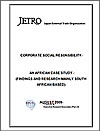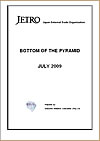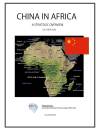 Nestle Ghana Limited
Nestle Ghana Limited
All data are collected in the Fiscal Year of 2008-2009.
Company Profile and History
In the 1860s Henri Nestlé, a pharmacist, developed a food for babies who were unable to breastfeed. His first success was a premature infant who could not tolerate his mother's milk or any of the usual substitutes. People quickly recognized the value of the new product, after Nestlé's new formula saved the child's life, and soon, Farine Lactée Henri Nestlé was being sold in much of Europe. In 1905 Nestlé merged with the Anglo-Swiss Condensed Milk Company. By the early 1900s, the company was operating factories in the United States, Britain, Germany and Spain. World War I created new demand for dairy products in the form of government contracts. By the end of the war, Nestlé's production had more than doubled.
The 1920s saw Nestlé's first expansion into new products, with chocolate the Company's second most important activity. The end of World War II was the beginning of a dynamic phase for Nestlé. Growth accelerated and companies were acquired. In 1947 came the merger with Maggi seasonings and soups. Crosse & Blackwell followed in 1960, as did Findus (1963), Libby's (1971) and Stouffer's (1973). Diversification came with a shareholding in L'Oréal in 1974.
Nestlé divested a number of businesses1980/1984. In 1984, Nestlé's improved bottom line allowed the Company to launch a new round of acquisitions, the most important being American food giant Carnation. Since 1996 there has been other acquisitions including San Pellegrino (1997), Spillers Petfoods (1998) and Ralston Purina (2002). There were two major acquisitions in North America, both in 2002: in July, Nestlé merged its U.S. ice cream business into Dreyer's and in August, a US$ 2.6bn acquisition was announced of Chef America, Inc. In 2003 Mövenpick Ice Cream was acquired, enhancing Nestlé's position as one of the world market leaders in this product category. In 2006, Jenny Craig and Uncle Toby's were added to the Nestlé portfolio and 2007 saw Novartis Medical Nutrition, Gerber and Henniez join the Company.
Nestlé Ghana Limited started business in Ghana in 1957 under the trading name of Nestlé Products (Gh) Limited with the importation of Nestlé products such as milk and chocolates. In 1968, it was incorporated as Food Specialties (Gh) Limited to manufacture and market locally well known Nestlé brands. The company became Nestlé Ghana Limited in 1987.
In 1971 the production of the IDEAL Milk and MILO started at the Tema Factory. The factory has since been further developed and now also produces CARNATION milks, CHOCOLIM, CHOCOMILO CEREVITA, CERELAC and NESCAFÉ 3 in 1. These products are not only produced for Ghana but also exported across West Africa.
In 2003, Nestlé Ghana Ltd invested in a new warehouse, the Central Distribution centre, located next to the factory in Tema. The company also runs sales offices with warehouses in Kumasi, Takoradi, Koforidua and Tamale.
The Company has invested some 130 billion cedis in 2004 and 2005 to increase its production capacity, particularly in the area of cocoa-based beverages, and to construct modern and efficient distribution facilities next to the factory in Tema.
In Country Location
33 Motorway Extension, North Dzorwulu, Accra, Greater Accra Region;
Telephone: +233 (0)21 500701
Telefax: +233 (0)21 501195 /501196
Services and Products
Marketing well-known brands such as: IDEAL Full Cream Evaporated Milk, CARNATION Filled Milk, Carnation Tea Creamer, MILO, CHOCOMILO, CHOCOLIM, CEREVITA Porridges, CERELAC Maize/Milk and CERELAC Wheat/Milk. Nestlé Ghana also imports and distributes brands such as: NIDO Milk Powder, LACTOGEN Infant Formula, NAN Infant Formula, NESCAFE Soluble Coffee, and MAGGI Bouillon's and Cold Sauces and under the brand MAGGI Bouillons, Seasoning Powders such as NKRAKRA PA and Cold Sauces like KETCHUP, AROME and MAYONNAISE.
Number of Employees
Nestlé employs 283,000 people worldwide, of whom approximately half are in developing countries. In Ghana the company employs 1,000 people.
Financial Information
Market Share
Nestlé is not only Switzerland's largest industrial company, but also the world's largest food company. With products like Perrier and Nescafé, it is the market leader worldwide in coffee and mineral water, the largest manufacturer of pet food, and is fast increasing its share of the ice cream market.
Nestlé Ghana is ranked 437 in the “Top 500 Companies in Africa 2009” and as one of the top ten companies in Ghana for 2009 (6th position overall and it is the only company in the food industry category on the list of top 10).
Business Objective
Nestlé's business objective is to manufacture and market the Company's products in such a way as to create value that can be sustained over the long term for shareholders, employees, consumers, and business partners.
In Ghana its objective is to be “the number one company not only in business terms and the highest profit making business but also the best employer, the most socially responsible citizen and ethically sound company.”
Business Model
The company’s business model is based on the 4 x 4 x 4 roadmap to deliver growth and enhance performance. The roadmap entails the following:
Strategic pillars:
Innovation & renovation; Operational efficiency; whenever, wherever, however; Consumer communication. “The priority is to excel in four core competences.
Innovation & renovation drives nutrition, health and wellness and places our brands ahead of the competition. Operational efficiency creates gaps with our competitors through our focus on excellence in operational performance. Whenever, wherever, however ensures our products are always available, whilst Consumer communication keeps consumers abreast of the innovation and renovation and builds our brands’ reputations. But Consumer communication is two-way: it also informs our innovation and renovation and thus the cycle begins again, with consumer-relevant innovation and research.”
Competitive advantages:
unmatched product and brand portfolio; Unmatched R&D capability; unmatched geographic presence; People, culture, values and attitude.
Growth drivers:
Emerging markets and popularly positioned products; Nutrition, Health and Wellness; Out-of-home leadership; Premiumisation
Emerging markets and popularly positioned products:
“We are well placed to benefit from the projected population increase in the developing world (estimated to grow by 3.3 billion between 2000 and 2050) as well as rising incomes. We are also successfully targeting CHF 1.3 trillion of sales made in the traditional grocery trade in the ten largest emerging countries. Indeed we expect at least to double our sales in emerging markets in the next ten years (in constant currencies). Our Popularly Positioned Products (PPP) appeal to the lower income segment (the world has 2.8 billion consumers earning less than US$ 10 a day) by offering relevant and good quality nutritious products, particularly beverages, dairy, culinary and confectionery, at price points that enable these consumers to buy them on a daily basis. In so doing, they help deliver a balanced nutritional diet for consumers, profitable growth for Nestlé, and contribute to the economies of emerging countries and their people. PPP accounted for about 6% of our food and beverage sales and achieved organic growth of 27.4% in 2008. Our PPP strategy is built on a low-cost business model that relies on local sourcing, local manufacture and local distribution to take cost out of all areas of the business. We train micro-distributors, often financed by our micro-loans, and provide vending carts that can reach market stalls and small shops that account for much of the retail space in emerging countries. In this way, PPP are a source of income for street traders and individual distributors.”
Ownership of Business
Nestle Ghana Ltd Accra: 76% and Government acting through the National Investment Bank (24%)
Benefits Offered and Relations with Government
The business activity of Nestlé Ghana Ltd is regarded as a direct contribution to the Ghanaian economy. As a result Nestlé Ghana Ltd has been recognized by Government and as a “responsible citizen.” The company also takes an important role in the social life of Ghana by promoting medical students in health sciences, supporting child education and social events as well as sports. It is the largest corporate sponsor of sport events. Any donation made during a year of assessment for the purpose of sports development or sports promotion and approved by the Government may be deducted in calculating the chargeable income for the year.
Product Development
Nestlé’s factory in Southeast Ghana is located in Tema, a city built in the 1960s as a man-made harbour that became Ghana’s leading seaport and an industrial centre. Nestlé’s factory is part of an industrial zone with a waste water treatment plant. An investigation by Nestlé revealed that the local treatment plant was of insufficient quality, so a monitoring programme was installed in October 2005 to calculate parameters for a custom built waste water treatment plant. Nestlé engineers are now supporting the construction of a treatment plant in Tema plant.
Nestle Ghana will invest a total of GH¢ 9.91 million in 2009 in additional plant and equipment to improve its factory capacity and productivity. The company will also start works on the construction of a new cereal plant, which is expected to be commissioned next year, while it hopes to install a new duplex filling machine to replace the current machine for two of its products, the 200 grammes milo and chocolim. The company would improve its factory capacity to supply more products to the Ghanaian market and also for export to other Central and West African countries.
Nestle had also included in its processes, a 24-hour ordering and delivery cycle customer service plan, direct delivery and minimum order quantity on its supply chain to enable the company to deliver efficient services to its valued customers. Some of the measures taken to improve service delivery include the purchase of a dozen of 3-wheel mopeds to improve their distribution in the smaller food services. Vending machines would increase by 350 more pieces this year.




